Hive minds: How 'swarm robots' are learning from insects
STORY HIGHLIGHTS
- Scientists are building robots that can work in teams
- 'Swarm robots' operate like hive insects such as ants, termites or bees
- MIT's M-blocks robot can self-assemble to solve different problems
- Swarm robots could be used in search and rescue, medicine and space exploration
While this bleak vision assumes a number of seemingly distant technological and political developments, some ideas currently driving robotics research may, for some, bear an uncomfortable resemblance to those of the 80s sci-fi smash.
In particular, one area where life seems to be imitating art is the fledgling field of 'swarm robotics', in which scientists are creating teams of robots that can work together toward a single goal -- from mending a leak to clearing mines -- with minimal or no input from humans.
Much of the research is based on the observed behavior of 'eusocial' insects -- such as ants, bees and termites -- who work collectively on complex tasks without central management or higher order intelligence.
Consider for a moment a typical termite nest -- with its labyrinth of chambers and intersecting corridors. It's built entirely by vast teams of micro-sized, speck-brained creatures (no disrespect) -- without so much as a blueprint to work from. So, the question for researchers is: how can we emulate this type of behavior in robots to help us solve problems and generally make our lives easier?
Recently, researchers at Massachusetts Institute of Technology (MIT) unveiled 'M-blocks' - robots that can assemble themselves into different shapes to perform a range of basic tasks, without input from a human controller.
While M-Blocks may not look particularly inspiring, the way they reshape is the first step toward a future where robots rebuild themselves to solve new problems. An M-Blocks-based robot working underwater might make itself narrow to fit through a deep sea crevasse, or a tiny team of medical robots could spread themselves flat to plug a gap in the human heart -- all without having been pre-programmed to do so.
At the moment researchers are still working to make teams of robots complete more basic tasks. Sheffield University researchers, for example, are using swarms of robots to fetch, carry and push objects in unison.
Dr Roderich Gross, head of the Natural Robotics Lab at the University of Sheffield, says: "We are developing artificial intelligence to control robots in a variety of ways. The key is to work out what is the minimum amount of information needed by the robot to accomplish its task. That's important because it means the robot may not need any memory, and possibly not even a processing unit, so this technology could work for nanoscale robots -- for example in medical applications."
The big challenge is to ensure that swarm robotics technology will be used for the betterment of mankind
Jan Carlo Barca, roboticist
Jan Carlo Barca, roboticist
Some of the most interesting applications for swarm robotics exist where robots go beyond the realm of easy human reach, say into space or under the sea, or -- as Gross says -- inside the human body to perform medical tasks at a microscopic or 'nano' scale.
Aaron Becker, a postdoctoral researcher at Rice University has been working on an experiment (that you can join in here) to test different ways swarm robots can be deployed, with a view to seeing 'nano-robots' eventually used in medical operations.
The project seeks to demonstrate how teams of robots could be utilized with minimal input from the outside world, possibly beneath the surface of the skin in a bid to tackle disease.
But how might this be done?
Researchers at the Nanorobotics Laboratory in Montreal are looking at using swarms of miniature drones to fight pathogens within the human body. Sylvain Martel, the laboratory's Research Chair, believes that preliminary research conducted in his lab could lead to future treatments where small magnetic robots are inserted into the body to fight cancer. Other researchers are investigating ways to use swarming robots in diagnosis, so that problems are detected before they become life threatening.
Becker believes that in future, swarms of nano-robots might even come to be used in surgery: "If we can shrink the surgeon and their tools while maintaining their effectiveness, non-invasive surgery could revolutionize health care. I want to be a part of that dream," Becker says.
Jan Carlo Barca, a member of the Swarm Robotics Laboratory at Monash University in Melbourne, Australia says that there are plenty of worthy applications for swarm robots, but some scientists working in the field worry that their research may end up being used for military purposes:
This idea is not new, in fact it is almost 65 million years old.
James McLurkin, Assistant Professor, Rice University Department of Computer Science
James McLurkin, Assistant Professor, Rice University Department of Computer Science
"Some potential application areas for swarms of robots are: cooperative search in disaster sites to support rescue efforts, pollution detection and monitoring, mine clearing, exploration, mapping and dynamic motion capture for the film industry," he says.
"However, all this comes at a cost as this technology also will be exploited by defense agencies all over the world. (For example) the U.S. Defense Force has investigated how the hunting strategies of wolf packs, coyotes and killer whales can be used in military contexts. The Israeli Defense Force is also investigating how one can use miniature robotic mosquitoes in the same context."
And while the apocalyptic events of James Cameron's Terminator 2: Judgment Day are relatively unlikely, it is reassuring that many within the swarm robotics community are determined that their work will be applied to the right ends:
"The big challenge," Barca says, "is not only to formulate technologies that can be used in the real world, but also to ensure that swarm robotics technology will be used for the betterment of mankind."
We recommend
- Official: Navy SEAL team pulled out when it couldn't capture suspect alive (CNN International - Africa)
- World's latest mega-airport finally opens to passengers (CNN International - Travel)
- Saudi Arabia issues warning to women drivers, protesters (CNN International - Middle East)
- Hey, Miley, Suzanne Somers is having lots of sex (CNN International - Entertainment)
- Microsoft exec savages Apple's 'struggling, lightweight' tools (CNN International - Tech)
- Apparently This Matters: Being average is sexy (CNN International - Tech)
From around the web
- Apple's New iPads: 7 Predictions (InformationWeek)
- Top Pictures of George Clooney's Ex-Girlfriends Will Shock You (Rant Lifestyle)
- 3 brilliant leadership qualities I learned from NASA (Fresh Thinking)
- How to Protect Your Privacy On Your Mobile Devices (Hotspot Shield)
Part of complete coverage on
September 2, 2013 -- Updated 0934 GMT (1734 HKT)
Next time you marvel at the computer hardware in your hand, spare a thought for the billions of tiny transistors within. Without them our modern gizmos wouldn't work.
August 5, 2013 -- Updated 0916 GMT (1716 HKT)
As far-fetched as it sounds, if you can't afford to buy a house then designing and building your own may be more viable than you assumed.
August 5, 2013 -- Updated 1749 GMT (0149 HKT)
The world's first stem cell burger, which cost a cool $300,000 to develop, has been cooked and eaten by two volunteer tasters in London
August 15, 2013 -- Updated 1356 GMT (2156 HKT)
Amateur space enthusiasts are reviving humanity's interplanetary dreams through crowd-researched and crowd-funded space projects.
Do you need a new TV, house or limb? All you need is to press print. Take an interactive scroll through to the future of 3D printing.
August 5, 2013 -- Updated 0919 GMT (1719 HKT)
See how India's frugal innovators are adapting existing tools and technologies to provide all manner of imaginative low-cost solutions.
June 20, 2013 -- Updated 2032 GMT (0432 HKT)
It could easily be a deleted scene from the classic movie, ET, but two British inventors claim to have invented the world's first flying bicycle.
June 20, 2013 -- Updated 1523 GMT (2323 HKT)
What's 1,200-years-old, made of wood and responsible for the smart-phone in your pocket? Japan's Toji Pagoda, of course!
June 7, 2013 -- Updated 1012 GMT (1812 HKT)
The inventor of GPS technology, Bradford Parkinson, tells CNN the future of transport is self-driving cars.
May 29, 2013 -- Updated 1253 GMT (2053 HKT)
It may be constructed from drainage pipes but according to its 18-year-old inventor, this single-person U-boat can plunge to a depth of 30 feet.
May 24, 2013 -- Updated 1728 GMT (0128 HKT)
A treasure trove of technological 'firsts', including an incredibly rare Apple 1 computer, goes on auction in Germany
May 10, 2013 -- Updated 1124 GMT (1924 HKT)
How did an ex-cop fashion a fully functioning robot from old hi-fi speakers, DVD players and assorted household items?
April 26, 2013 -- Updated 1341 GMT (2141 HKT)
More than 10 billion USB sticks are believed to be in use around the world today ensuring co-inventor, Ajay Bhatt, has a place in tech's unofficial hall of fame.
Most Popular
Today's five most popular stories

Katy Perry's naked plea
CNN International - Video

Boston parade celebrates city's strength
CNN International - Video

Katy Perry's naked plea
CNN International - Video

Boston parade celebrates city's strength
CNN International - Video

New California 'revenge porn' law may miss some victims

How Samsung is out-innovating Apple

Report: Apple will reveal new iPhone next month

New California 'revenge porn' law may miss some victims

How Samsung is out-innovating Apple

Report: Apple will reveal new iPhone next month

Steve Downie taken to hospital after fight, others hurt in brawl
Sports Illustrated

9 Automobiles Consumers Avoid Like the Plague
Wall St. Cheat Sheet

Steve Downie taken to hospital after fight, others hurt in brawl
Sports Illustrated

9 Automobiles Consumers Avoid Like the Plague
Wall St. Cheat Sheet
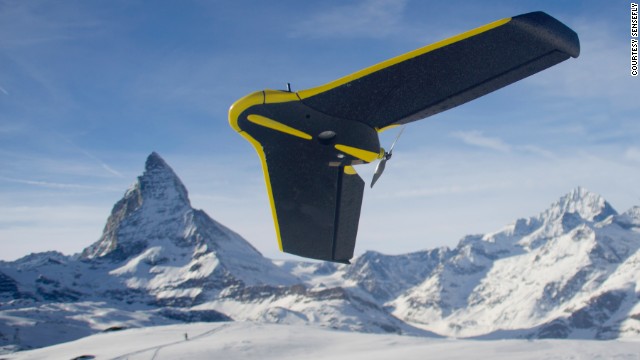 Mapping the treacherous terrain of one of the Alps' most deadly peaks just got a lot easier, with a fleet of
Mapping the treacherous terrain of one of the Alps' most deadly peaks just got a lot easier, with a fleet of 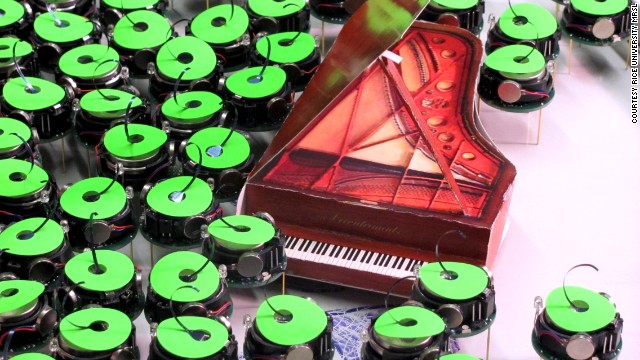 100 swarm robots tackle the "
100 swarm robots tackle the "
 Imagine building blocks which can effortlessly construct themselves into any shape.
Imagine building blocks which can effortlessly construct themselves into any shape. 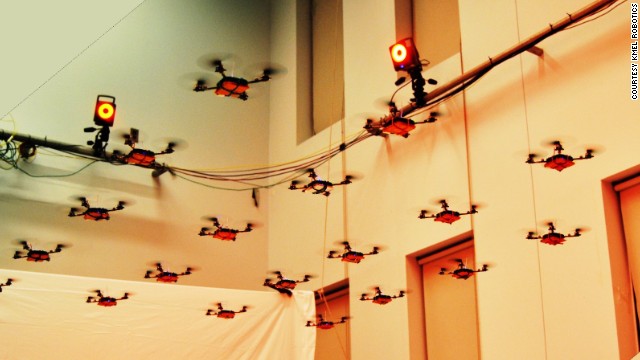
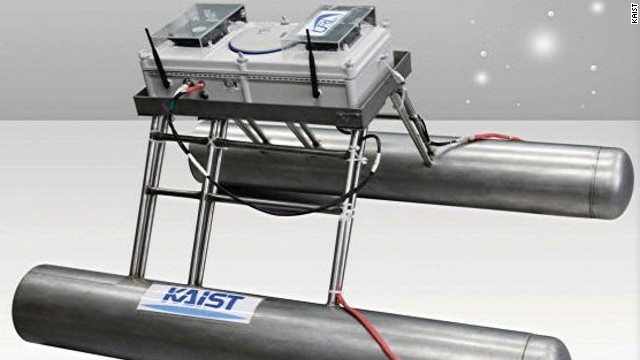 A swarm of killer robots raging war against wave after wave of deadly jellyfish -- this is happening in real life, folks. The battle is taking place today off the coast of Korea, where researchers from the Korea Advanced Institute of Science and Technology have deployed the
A swarm of killer robots raging war against wave after wave of deadly jellyfish -- this is happening in real life, folks. The battle is taking place today off the coast of Korea, where researchers from the Korea Advanced Institute of Science and Technology have deployed the  It sounds like the plot of children's cartoon: create a miniature model of anything your heart desires, drop it in a miraculous bag of sand, and
It sounds like the plot of children's cartoon: create a miniature model of anything your heart desires, drop it in a miraculous bag of sand, and 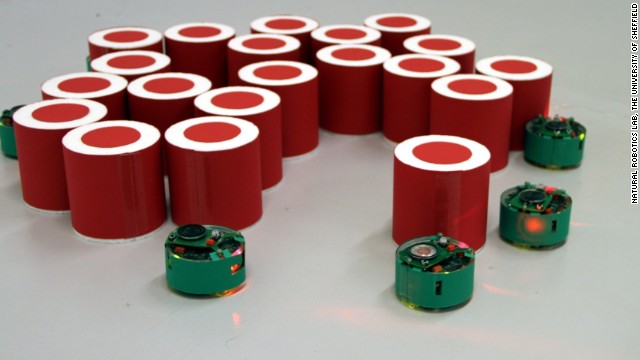 The University of Sheffield's "nanobots" are designed to be as basic as possible. Yet they have already mastered simple fetching and carrying tasks, such as grouping these objects together, without central control. The
The University of Sheffield's "nanobots" are designed to be as basic as possible. Yet they have already mastered simple fetching and carrying tasks, such as grouping these objects together, without central control. The  Proving that robot swarms can go anywhere, researchers from Scotland's
Proving that robot swarms can go anywhere, researchers from Scotland's  Keen to capitalize on the development of swarm technology, the U.S. Defense Advanced Research Projects Agency (DARPA) has launched
Keen to capitalize on the development of swarm technology, the U.S. Defense Advanced Research Projects Agency (DARPA) has launched 























No comments:
Post a Comment